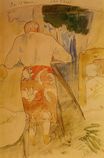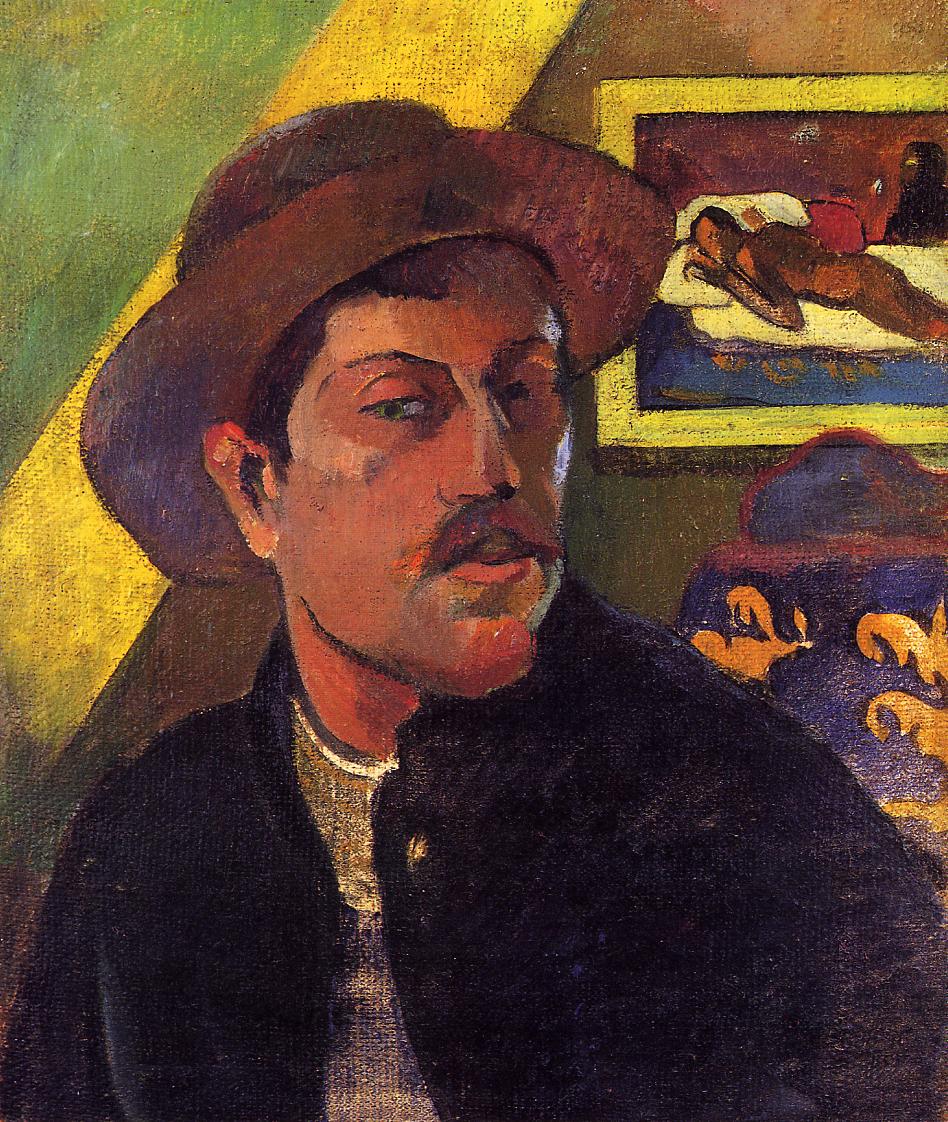Гоген Поль - Автопортрет в Шляпе 1893
 |
 |
 |
 |
 |
 |
 |

Автопортрет в Шляпе 1893
46x38см холст/масло
Musée d'Orsay, Paris, France
The image is only being used for informational and educational purposes
<< Previous G a l l e r y Next >>
From Musée d'Orsay, Paris:
When Gauguin returned to Paris on 1 September 1893, after his first stay in Polynesia, he decided to present his Tahitian works and to justify his "savage" painting. His efforts were not entirely successful: in November he offered a painting (La Orana Maria, New York, Metropolitan Museum of Art) to the Musée du Luxembourg, but it was refused. An exhibition of his greatest Tahitian masterpieces was not as successful as he would have wished. A few painters and critics like Degas, Jarry and Natanson supported him, but the majority of artists were very non-committal.
This self-portrait seems to be a response to these setbacks, a renewed affirmation of his rebellious spirit. Behind him – as a mirror image – Gauguin places the famous Manau Tupapau (The Spirit of the Dead Keeps Watch, Buffalo, Allbright Knox Art Gallery), in his opinion the most important and significant work from his stay in the Pacific. He portrays himself in the "Tahitianised" décor of his new studio that he had painted in yellow and olive green. The blue and yellow sarong on the right reminds us that it is filled with exotic bric-a-brac. The image he is puts over is that of an untamed artist, with "primitive" features, whose ruggedness is highlighted by the simple brushwork and rough material of the canvas.
On the back of the picture, Gauguin painted the lightly distorted face of his young friend William Molard (1862-1936). A Wagnerian musician, he had links with the European bohemian artists of Montparnasse at the time, some of whom, like Strindberg and Durio, would help bring Gauguin's work to the public's attention.
The two sides of the painting provide a good summary of the winter of 1893-1894, when the painter was in Paris. This short period laid the foundation for introducing primitivism into the European cosmopolitan avant-garde at the turn of the century.